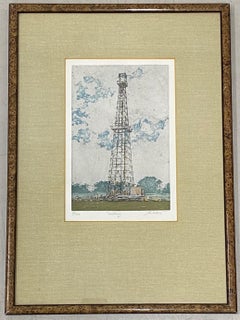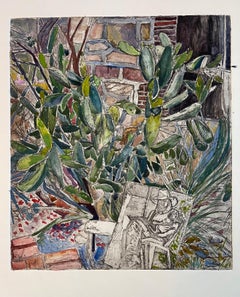John Collette Art
John Collette born in Boston, Massachusetts, on December 25, 1941. His interest in art began in early childhood when he discovered the fun and excitement of drawing and painting. His first formal art training, in junior high school, was particularly helpful to his becoming an artist because his teacher recognized his talent and gave him more demanding assignments than his classmates and generously offered to enter John's work in National Scholastic Art Competitions. Music was another of John's early interests and he studied several instruments and played in various musical groups while growing up. When he was ready for college he wanted to continue his musical studies. After passing an audition on piano, he was accepted as a music major at Boston University. In 1963, John visited Quebec City, Canada. There, he decided to do some sketches of the quaint old parts of the town. This led to his meeting a group of art students who had recently begun to exhibit their work on a narrow street. Rue du Trésor, just off the main square. They invited John to join them. He showed them the sketches he had just completed and quickly sold for a few dollars. For the next several summers, he worked in Quebec, experimenting with a wide variety of mediums and styles and finding a steady stream of buyers in the tourists who visited the city. The rest of the year, while attending Boston University, he continued to paint, selling his work through galleries in Boston and Philadelphia. His early work in watercolors and ink paved the way for the development of his distinctive hand-colored etching technique, to which he devoted himself for more than 25 years. John also did a series of paintings of the Hudson River Valley for limited edition giclee prints. John’s work is well-known in the United States and abroad. His art is included in many private, corporate and public collections. For the last 13 years of his life, he spent most of his time in New England and Hawaii. John Collette passed away in Boston in September of 1997.
Late 20th Century John Collette Art
Aquatint, Etching
Early 1900s Academic John Collette Art
Archival Paper, Aquatint
2010s Contemporary John Collette Art
Paper, Ink, Archival Ink, Aquatint, Watercolor
Early 19th Century John Collette Art
Aquatint
Early 19th Century John Collette Art
Aquatint
Early 19th Century John Collette Art
Aquatint
Early 19th Century John Collette Art
Aquatint
Early 20th Century Impressionist John Collette Art
Aquatint
1960s Modern John Collette Art
Etching, Aquatint
Early 1900s French School John Collette Art
Aquatint
1970s Realist John Collette Art
Aquatint
1890s Realist John Collette Art
Aquatint
1990s Contemporary John Collette Art
Etching, Aquatint


